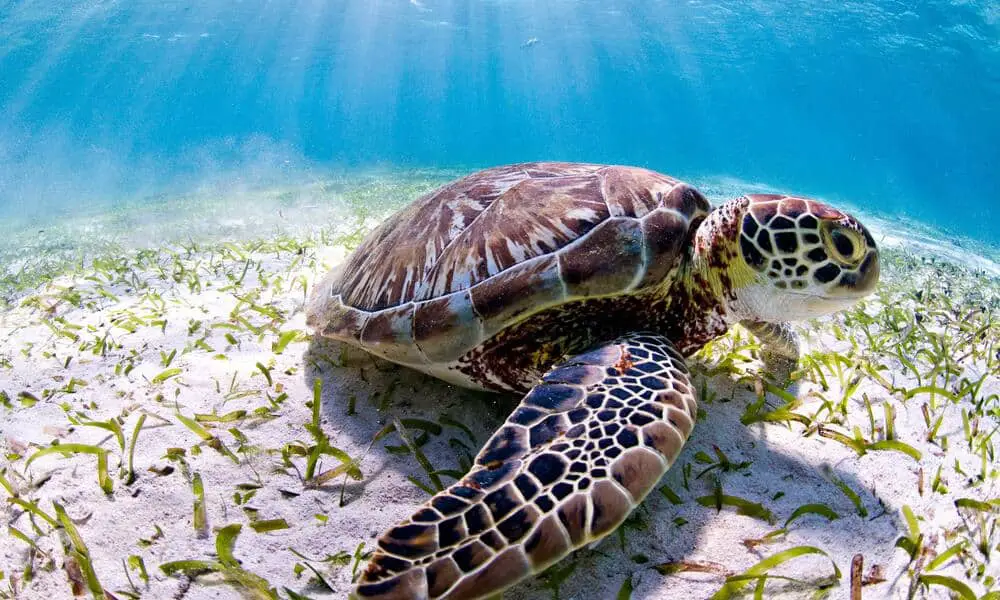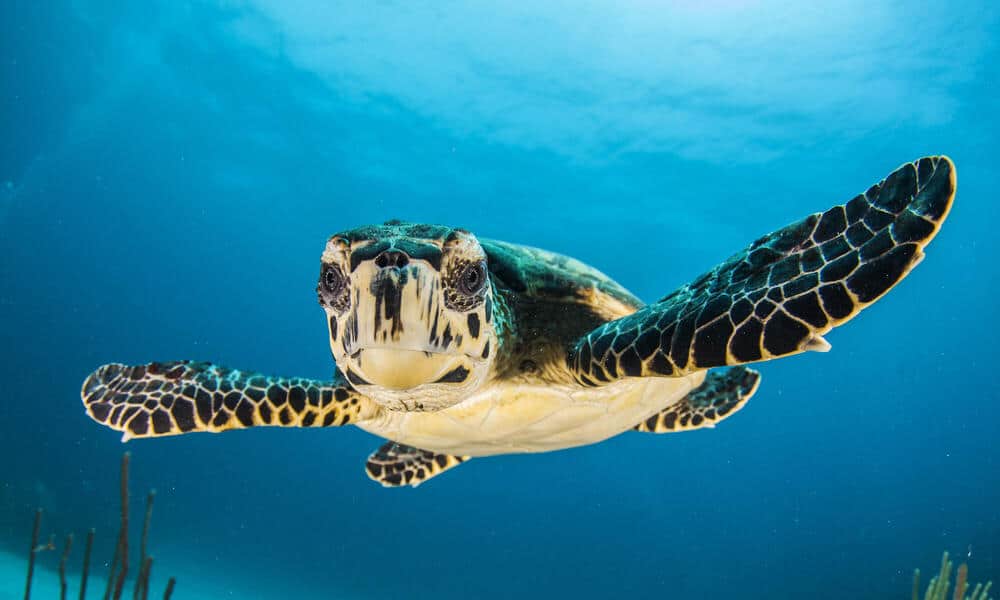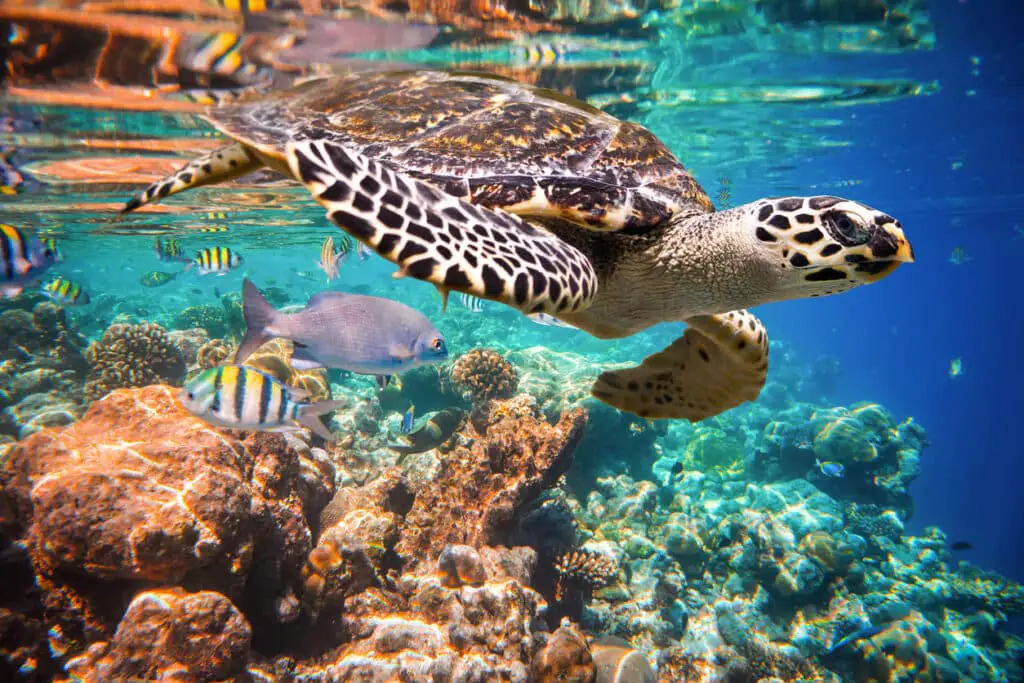How To Help Sea Turtles

Introduction
How To Help Sea Turtles: Sea turtles are magnificent creatures that have inhabited our planet’s oceans for millions of years, but today, they face numerous threats to their survival. From pollution and habitat destruction to accidental capture in fishing gear, these ancient reptiles are in dire need of our help. There are various ways individuals and communities can contribute to the conservation and protection of sea turtles.
One of the most pressing challenges sea turtles encounter is plastic pollution. Plastic waste, including straws, bags, and fishing nets, often ends up in the oceans, where sea turtles can ingest it or become entangled, causing harm or even death. By reducing our plastic consumption and properly disposing of waste, we can mitigate this threat and create a cleaner environment for these gentle creatures.
Another significant issue is habitat destruction. Coastal development, such as resorts and infrastructure, can disrupt nesting sites and natural habitats for sea turtles. Supporting and advocating for the preservation of nesting beaches and critical habitats is crucial for their survival.
Sea turtle conservation organizations work tirelessly to protect these species. Volunteering, donating, or even participating in beach cleanups can make a substantial difference in safeguarding sea turtles.
In this guide, we will explore various ways to help sea turtles, from simple everyday actions to more involved efforts, empowering you to become a part of the global movement to ensure the future of these remarkable marine animals.

What helps sea turtles survive?
Sea turtles can live in seawater with no need for a freshwater source. They obtain sufficient water from their diet and from metabolizing seawater. Like other marine reptiles and seabirds, sea turtles have a salt gland to rid their bodies of excess salt. This gland empties into the sea turtles’ eyes.
Sea turtles are remarkable survivors in the vast and often harsh marine environment, thanks to a combination of evolutionary adaptations and the preservation of specific ecological conditions. Their remarkable survival traits include:
- Shell Protection: The distinctive hard shells of sea turtles provide critical protection against predators. These shells, composed of bony plates covered with keratin, act as armor to shield them from harm.
- Streamlined Bodies: Sea turtles have evolved streamlined bodies that allow them to swim efficiently through the water. This adaptation helps them navigate ocean currents and evade potential threats.
- Salt Gland: Sea turtles possess a specialized salt gland near their eyes, allowing them to excrete excess salt, which is essential for maintaining the right balance of salt and water in their bodies.
- Strong Navigational Skills: Sea turtles exhibit remarkable navigational abilities, using the Earth’s magnetic field and celestial cues like stars to find their way across vast ocean distances.
- Behavioral Patterns: Nesting behaviors, such as returning to the same beaches where they were born, contribute to their survival. This ensures that they lay their eggs in suitable locations, reducing the risk of predation.
- Conservation Efforts: The survival of sea turtles also heavily relies on human conservation efforts. Protecting their nesting sites, reducing plastic pollution, and implementing fishing practices that minimize accidental capture are all essential steps in ensuring their continued survival in a rapidly changing world.
What helps sea turtles eat?
The jaws of a loggerhead sea turtle are adapted for crushing and grinding. Loggerheads’, Kemp’s ridleys’, and olive ridleys have jaws that are well adapted for crushing and grinding. Their diet consists primarily of crabs, mollusks, shrimps, jellyfish, and vegetation.
Sea turtles are well adapted to their marine environments, and their feeding strategies are a testament to their survival skills. Several key adaptations enable them to find, capture, and consume their prey:
- Specialized Jaws: Sea turtles have beak-like jaws that are adapted to their specific diets. Depending on the species, they may have sharp, pointed beaks for tearing seagrasses or crushing shells, or serrated beaks for slicing through jellyfish.
- Excellent Vision: Sea turtles have excellent underwater vision, which helps them locate their prey. They can see well in low light conditions, making them efficient hunters during both day and night.
- Powerful Limbs: Front flippers of sea turtles are strong and flexible, allowing them to swim rapidly and maneuver gracefully to catch prey. These limbs are also used to grasp and manipulate food.
- Chemoreception: Sea turtles have specialized glands near their eyes that help them detect chemical cues in the water. This ability helps them locate food sources, such as the scent of prey or the aroma of nesting beaches.
- Diverse Diets: Different species of sea turtles have diverse diets, including seagrasses, algae, jellyfish, sponges, and even small crustaceans. Their adaptability in consuming various prey items contributes to their survival.
- Filter Feeding: Some sea turtle species, like the leatherback, possess unique adaptations for filter feeding. They have papillae in their throat that help trap and swallow jellyfish and other gelatinous prey.
These adaptations collectively enable sea turtles to thrive in their oceanic habitats, efficiently foraging for the food they need to sustain their energy and health. As these ancient creatures face threats from habitat loss and climate change, it’s crucial to protect their feeding grounds and ensure their continued access to the resources they require to survive.
How do sea turtles protect themselves?
Shell. The shell is a natural suit of armor that protects the green turtle from predators. Although it can’t draw its arms, legs or head into its shell, its scaly, tough skin also provides some defense.
Sea turtles employ various strategies to protect themselves in their marine environment. One of the most distinctive features aiding their defense is their hard, bony shell, or carapace, which shields them from predators. This shell serves as a natural armor, providing crucial protection against potential threats.
Sea turtles have evolved impressive adaptations that allow them to avoid danger. They are highly skilled swimmers, enabling them to swiftly escape from predators. Their streamlined bodies and powerful flippers allow them to navigate the ocean with agility.
In addition to physical defenses, sea turtles have developed behavioral adaptations. They often choose to forage in areas with abundant food sources, reducing the need to venture into riskier territory. They are also known for their impressive ability to hold their breath for extended periods, which helps them evade predators by hiding underwater when needed.
However, despite these remarkable defense mechanisms, sea turtles face numerous threats from human activities such as habitat destruction, pollution, and accidental entanglement in fishing gear. Conservation efforts are essential to ensure the continued survival of these incredible creatures and to protect their natural defenses for generations to come.
Can sea turtles drink salt water?
All sea turtles drink only seawater all of their lives. They have special glands behind each eye, called “salt glands” that they use to get rid of all the salt from the seawater.
Sea turtles are fascinating creatures adapted to life in the ocean, but they face a unique challenge when it comes to hydration. While they primarily live in saltwater environments, sea turtles cannot drink saltwater as mammals or birds do because their bodies lack specialized salt glands to filter and excrete excess salt. Consuming saltwater would lead to dehydration and could be fatal for them.
Instead, sea turtles have evolved a clever solution. They obtain their hydration primarily from the food they consume, such as sea grasses, algae, and jellyfish, which contain some water content. They extract moisture from these sources and eliminate excess salt through their specialized tear glands. Sea turtles often appear to cry while basking on the beach, but it’s actually a way for them to remove excess salt from their bodies.
During nesting, when female sea turtles return to the shore to lay their eggs, they might accidentally ingest some saltwater, but this is a minor occurrence compared to their overall hydration needs.
In essence, sea turtles have adapted to their saltwater environment by relying on their diet and unique physiology to stay hydrated, avoiding the deadly consequences of drinking seawater.
How do turtles survive in their environment?
To protect themselves from predators, turtles can pull their heads, legs, and tails into their shells. Box turtles have the additional ability to clamp their shells completely shut due to a hinge in the plastron. Because the shell is made of bone, very few predators can successfully consume an adult turtle.
One key feature of a turtle’s survival strategy is their protective shell. This bony structure provides a shield against predators and environmental threats. When threatened, turtles can retract their limbs and head into their shells, making them a formidable fortress.
Turtles are also well-suited to aquatic life. Their streamlined bodies and webbed feet facilitate efficient swimming, allowing them to navigate through water with ease. Many turtle species possess specialized respiratory adaptations, such as the ability to extract oxygen from water through specialized cloacal bursae or gills, allowing them to stay submerged for extended periods.
On land, turtles use their sturdy legs and claws for digging burrows and finding food. Some species, like tortoises, have evolved to survive in arid environments, with their ability to store water in their bladders and withstand extreme heat.
Overall, turtles’ adaptability and resilience have allowed them to inhabit diverse habitats, from lush rainforests to arid deserts and freshwater ponds to vast oceans, demonstrating their incredible capacity to survive in a constantly changing world.
How can we help the sea turtles?
Keep nesting beaches dark and safe for sea turtles. Turn off, shield, or redirect lights visible from the beach. Lights disorient hatchling sea turtles and discourage nesting females from coming onto the beach to lay their eggs. Do not disturb nesting turtles, nests, or hatchlings.
To aid the plight of sea turtles, we must act collectively, combining knowledge, compassion, and conservation efforts. Firstly, it is crucial to minimize plastic pollution. Discarded plastics often end up in the oceans, posing lethal threats to these creatures. By reducing our plastic usage and participating in beach clean-ups, we can directly mitigate this hazard.
Additionally, supporting responsible tourism is pivotal. Coastal development and disruptive activities can disrupt nesting sites and disturb sea turtles. Advocating for sustainable tourism practices and choosing eco-friendly accommodations near nesting beaches can make a significant difference.
Supporting sea turtle conservation organizations is vital. These groups play a pivotal role in monitoring nesting sites, rescuing injured turtles, and conducting research to better understand their habits and needs. Donations and volunteer efforts can help fund these initiatives.
Education and awareness are also powerful tools in sea turtle preservation. Spreading knowledge about their life cycles, threats, and conservation efforts can inspire others to take action. Teaching local communities, especially in coastal areas, about the importance of protecting these ancient creatures can foster a sense of stewardship.
Safeguarding sea turtles demands a multi-faceted approach. From reducing plastic pollution to supporting conservation organizations and educating communities, every effort counts towards ensuring the survival of these remarkable species for generations to come.
What should I do if I encounter a stranded or injured sea turtle?
Encountering a stranded or injured sea turtle is a critical moment that demands immediate, careful action. Firstly, ensure your own safety and approach the situation calmly and quietly. Avoid sudden movements and loud noises, as they can stress the turtle further. Do not attempt to return it to the water, as it may be in distress for a reason.
Contact a local sea turtle rescue or rehabilitation center immediately. These organizations are equipped with the knowledge and resources to handle such situations. While waiting for their arrival, try to provide basic care. Keep the turtle in a shaded area to prevent overheating and cover it with a damp cloth to maintain moisture. Refrain from feeding or attempting to treat injuries, as improper care can exacerbate the situation.
Document the location and condition of the turtle. Taking clear photographs can assist experts in assessing the turtle’s health and potential injuries. This information will be valuable for its rehabilitation.
Remember, it is illegal to disturb or handle sea turtles without proper authorization, as they are protected species in most regions. Your priority is to ensure the turtle’s safety and well-being until professional help arrives. Your swift and responsible actions can make a significant difference in saving these magnificent creatures.
Is it safe to swim with sea turtles?
Swimming with sea turtles can be a mesmerizing and enriching experience, but it’s imperative to approach them with respect and responsibility. Generally, it is safe to swim with sea turtles, as they are generally non-aggressive and unlikely to pose a threat to humans. However, there are important guidelines to follow to ensure both your safety and the well-being of the turtles.
Maintain a respectful distance. It’s crucial to avoid approaching turtles too closely or attempting to touch them. Human contact can disrupt their natural behavior and may cause them stress or harm.
Swim calmly and quietly. Sudden movements or loud noises can startle the turtles and potentially cause them distress. Move slowly and avoid making any abrupt gestures. Avoid chasing or cornering them. Allow the turtles to dictate the pace of the encounter. Harassing or pursuing them can lead to unnecessary stress.
Refrain from using flash photography or strong lights underwater. Bright lights can disorient the turtles and interfere with their natural behavior. Respect their habitat. Be mindful of the coral reefs and other marine life in the area. Avoid touching or standing on the reef to prevent damage.
By adhering to these guidelines, you can enjoy a safe and enriching experience while also protecting the well-being of these magnificent creatures and their fragile ecosystems.

Conclusion
These magnificent creatures face numerous threats, including habitat destruction, pollution, climate change, and accidental capture in fishing gear. To ensure their survival and well-being, it is crucial for individuals, communities, and governments to take action.
Conservation efforts should focus on protecting nesting beaches, where female sea turtles lay their eggs, and implementing measures to reduce light pollution, which can disorient hatchlings. Additionally, stricter regulations on plastic waste disposal and fishing practices can mitigate the harmful impacts of pollution and bycatch on sea turtles.
Supporting organizations dedicated to sea turtle conservation through donations or volunteering can make a significant difference. These organizations conduct vital research, rescue and rehabilitate injured turtles, and educate the public about the importance of these ancient creatures.
Individual actions, such as reducing plastic consumption, participating in beach cleanups, and promoting responsible tourism practices, also contribute to the well-being of sea turtles. Every effort counts in the collective mission to protect these endangered species.
Safeguarding sea turtles requires a collective commitment to change our behaviors and enact policies that prioritize their conservation. By working together, we can ensure that these ancient mariners continue to grace our oceans for generations to come, reminding us of the importance of preserving the delicate balance of marine ecosystems.



